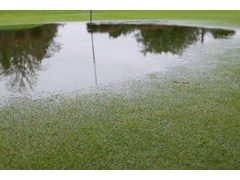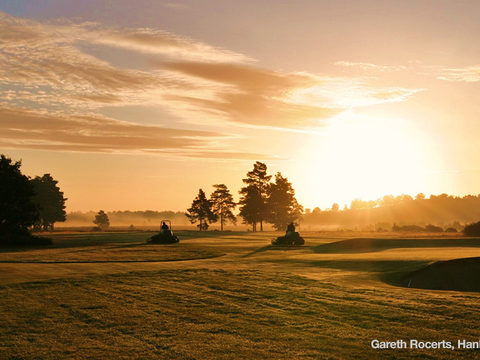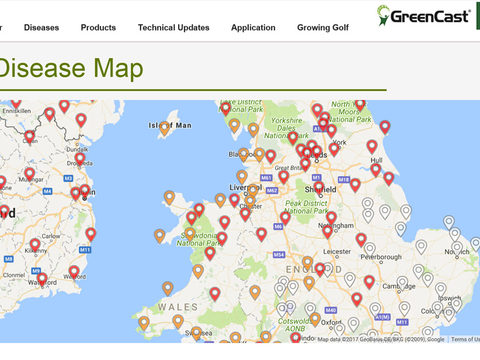GreenCast in UK and Ireland - WET RISKS FOR JANUARY

For most greenkeepers and turf managers, January has become synonymous with struggling to cope with saturated soils and flooding across the UK.
This winter has already seen some exceptionally wet periods, particularly in the north, west and Scotland, so any further prolonged rainfall, or melting of heavy snow, is likely to repeat the problems.
For the past two years it's not just been the volume of rain that has created serious issues, but also the almost continuous nature of wet days that prevented surfaces drying out. January 2015 was nowhere near as bad as the previous year, but was still up to 50% above the norm for some areas.

Keeping surfaces dry, to limit the extent of Microdochium Patch (Fusarium) outbreaks and help playing conditions, has proven nigh-on impossible.
Table 1.Comparing the weather conditions for January 2014 and 2015 highlighted the high rainfall for most areas - which on top of a wet December resulted in further flooding.
Av Temp (°C) | Rain (mm) | Days with rain | |||||||
Av. | 2014 | 2015 | Av. | 2014 | 2015 | Av. | 2014 | 2015 | |
UK | 3.0 | 4.8 | 3.7 | 121 | 188 | 153 | 15 | 23 | 19 |
N. England | 2.8 | 4.6 | 3.6 | 94 | 145 | 100 | 14 | 22 | 16 |
S. England | 3.7 | 5.9 | 4.7 | 77 | 168 | 86 | 13 | 24 | 15 |
Scotland | 2.0 | 3.5 | 2.5 | 177 | 218 | 252 | 19 | 23 | 23 |
Wales | 4.3 | 5.4 | 4.4 | 157 | 258 | 187 | 17 | 26 | 22 |
N Ireland | 3.7 | 4.5 | 3.6 | 116 | 173 | 133 | 17 | 24 | 21 |
The potentially welcome news is that, prior to 2014, January rainfall across the country had been below the long-term average for the previous five years.
Furthermore, January weather over the past 20 years has typically been getting warmer - and could continue the record-breaking trend already seen over the winter so far this season. Over the past 10 years it has averaged 4.2°C and topped five °C on three occasions - typically 1.2°C above the long-term average.
In the light of recent International climate change talks, the UK is already approaching target limits over the winter months.
This year there are already reports of unprecedented Microdochium Patch (Fusarium) activity. GreenCast historical records indicate localised pressure for January is set to see problems persist, especially where the pathogen is already well established in the thatch.
Assessing the risk from prevailing weather conditions will be key to getting fungicide timing right, to give optimum protection on the leaf surface and keep infection out.
Using the free GreenCast website also enables turf managers to select the most appropriate modes of fungicidal action to counter the threat. Protecting the turf with Medallion TL fungicide applications before forecast disease risk periods can provide long-lasting results, and is especially effective protection beneath any predicted snow cover.
When soil temperatures are fluctuating and there is evidence of some growth, as seen in many recent January conditions, the multi-active Instrata fungicide can provide the most appropriate protection for golf turf. If the disease pathogen has had any chance to infect the plant, the inclusion of systemic activity within the leaf is essential alongside the contact+ activity on the surface - to give disease control inside and out.
Warmest | Coldest | Wettest | Driest | Sunniest | Dullest | |
On record (since 1910) | 2007 (5.9ºC) | 1963 (-1.8ºC) | 1928 (205 mm) | 1997 (29 mm) | 1959 (70 hours) | 1996 (21 hours) |
Past decade (2006-2015) | 2007 (5.9ºC) | 2010 (0.9ºC) | 2008 (190 mm) | 2006 (60 mm) | 2012 (58 hours) | 2008 (40 hours) |
Table 2: UK average weather highs and lows for January. Although the south was very wet in 2014, overall the UK was actually wetter in 2008. |



